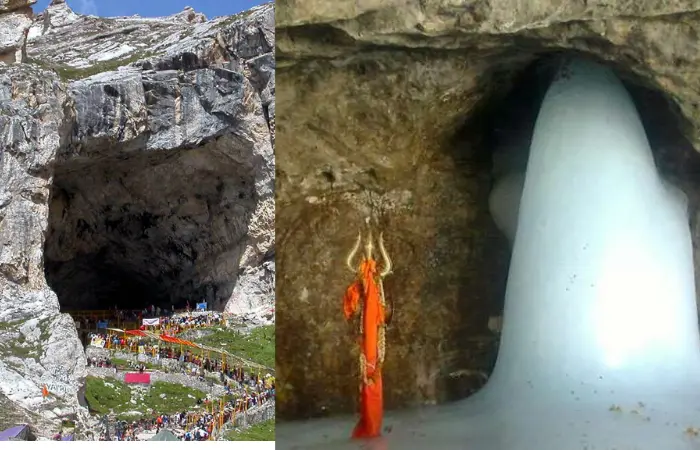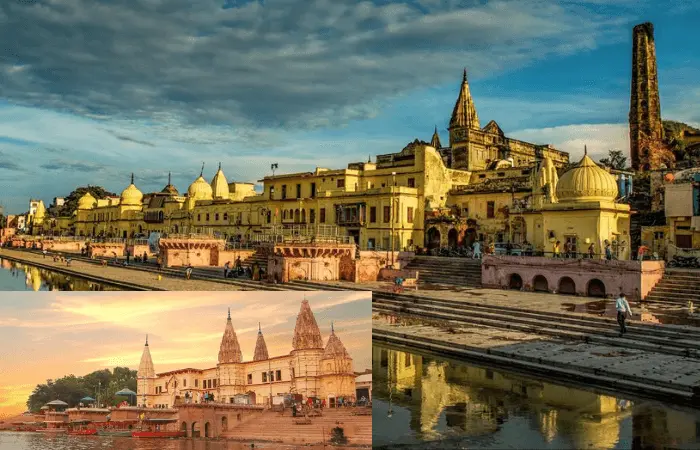In the scenic beauty of Himalayas lies the sacred Amarnath cave that is visited by millions of devotees all over the world. This natural wonder that is located in Jammu and Kashmir, India holds a lot of religious significance in Hinduism and it has stories that go as far back as some centuries ago. To understand the historical tapestry and the timeless mystique still attracting scholars and pilgrims, we will explore this ancient site.
The origin of Amarnath Cave is based on Hindu mythology. One popular story tells us about Shiva, who told Parvati, his wife, about immortality and creation inside this cave. Another story says Bhrigu Muni found it after water submerged Kashmir Valley; as the water level drained down, Bhrigu Muni discovered the majestic ice lingam which represents Lord Shiva.
Table of Contents
ToggleThe Enchanting Ice Lingam: A Natural Marvel
The most fascinating thing about the Amarnath Cave is the Shiva Lingam. This is not a man-made object, but a natural ice formation that looks like a lingam representing Lord Shiva. Throughout the pilgrimage season, the size and shape of the lingam fluctuate adding to its mysteriousness. The development of an icy lingam has been accounted for due to water seepage through cracks on the roof of the cave. When this water freezes during winter it forms an icicle that slowly grows into the shape of a lingam. It remains like this until summer when pilgrim’s season begins. As soon as higher temperatures set in, melting starts marking because all things are not permanent.
Archaeological discoveries indicate that for over five thousand years now people have considered this place sacred with records showing that pilgrims visited Amarnath as early as 6th century AD. However, it was not until 14th century when Swami Vivekananda made efforts to popularize this pilgrimage among masses so it became famous throughout India. Since then, it has developed into one of Hinduism’s most important religious expeditions drawing large numbers of faithful each year.
The Annual Pilgrimage: A Test of Faith and Endurance
The annual Amarnath Yatra, or pilgrimage, is a combination of spiritual and physically exhausting experiences that are embraced by many believers. Normally, it occurs during summer months between June and August, when the entrance to the cave is also accessible. In fact, the journey itself is a test of faith as well as endurance because it entails climbing mountains at high altitudes. The Amarnath Cave journey should not be viewed as just any physical expedition but instead a spiritual odyssey that compels pilgrims to be unwaveringly devoted and strong. Usually, traditionalythe yatra starts from the base camps in Pahalgam or Baltal which are known to be strenuous starting points for a long trek up to the cave. It takes several days to cover this trek through rough terrains consisting glaciers and dangerous mountain passes that usually examine pilgrims’ faith and strength. Pilgrims come across several holy sites along way with different gods attracting stories from folklore; each one having its own religious implication. Fervent hymnsand prayers fill the air on this route expressing the spiritual fervor of worshipers moving toward their honored destination.
Inside the Amarnath Cave, pilgrims are confronted with a sight that is both remarkable and inexplicable: an ice lingam formed naturally which is believed to be a formless representation of Lord Shiva. Located within the cave, the ice lingam is created by water drops from the ceiling freezing over time resulting from God’s manifestation. Hence, people are praying and performing certain rituals in front of the ice lingam intending to get blessings or attain spiritual satisfaction. The ambience of the cave carries an ethereal vibe as visitors take moments for soul-searching and communication with their God.
Despite its religious relevance, furore has erupted over environmental concerns about the annual pilgrimage. Himalayan environment gets threatened by increase in number of pilgrims accompanied with waste generation. Numerous measures have been put in place to encourage sustainable pilgrimage activities. These comprise promoting biodegradable materials use, enforcing stricter waste management systems and creating awareness among pilgrims about conservation efforts. The Amarnath Cave is a unique fusion between nature, mythology and religion. It acts as evidence of ancient Hindu traditions still being alive.
How To Visit Amarnath Cave:
Registration for Amarnath Yatra:
Registration for the Amarnath Yatra is mandatory. You can register online at the official website of the Shri Amarnathji Shrine Board (https://www.jksasb.nic.in/) or at designated registration centres across India. A mandatory health certificate is required during registration.
The Amarnath Cave is a holy cave shrine dedicated to Lord Shiva, located in Jammu and Kashmir, India. Every year, thousands of pilgrims undertake the challenging Amarnath Yatra to visit the cave. Here’s how you can go to the Amarnath Cave:
Reach Jammu and Kashmir
The nearest railway station to Amarnath Cave is Jammu Tawi Railway Station, located 178 km from the cave. You can take a local taxi or bus from Jammu Tawi to reach Baltal or Pahalgam, the two base camps for the Amarnath trek. Flights are also available to Srinagar Airport, which is around 90 km from Pahalgam.
Choose Your Route
There are two main routes to Amarnath Cave:
Read More Detail Information About Amarnath Cave Route
Also Read – Top 10 Best Must Visit Tourist Places To Visit In Ayodhya













